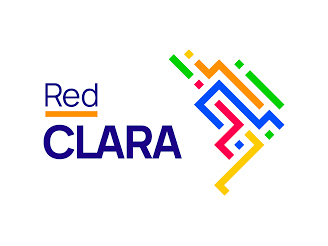Maybe best known for its role in crypto currencies, blockchain technology can have numerous other applications, for instance in connecting smallholder farmers with global markets. This is one of more than 100 solutions developed by LACNET, a nonprofit and neutral orchestrator of blockchain infrastructure for Latin America and the Caribbean. LACNET is established and supported by RedCLARA, the regional research and education network for Latin America, and the Internet Address Registry for Latin America and the Caribbean (LACNIC).
Besides enhancing the business opportunities for smallholder farmers, the solution also assists them in adapting to climate change. The initiative is called AgroWeb3 and was created by the Inter-American Development Bank’s Innovation Lab (BID Lab) and the International Fund for Agricultural Development (IFAD). AgroWeb3 builds on the blockchain infrastructure LACNet.
“We think about LACNet as a bridge between regions. Many use cases require interoperability with countries in the European Union or the United States. To make that possible, we need technological infrastructure aligned with international standards,” says Mariana Kotik, Chief Commercial Officer at LACNet.
Helping more than 9 million people
The project on blockchain applications was started three years ago by RedCLARA, LACNIC and BID Lab. It has contributed to more than 100 solutions in 23 countries and thereby helped more than 9 million people. Applications are seen in areas such as education, digital identity, government transparency, and financial inclusion.
Already, LACNet has established itself as a key pilar in the digital transformation of Latin American and the Caribbean. With blockchain technology, information is distributed across multiple interconnected nodes so that if one fails, the others continue operating, preventing data loss. Its validation system prevents information from being altered, as any modification attempt would be rejected by the other nodes, which have identical copies of the data. Information is visible to those with access but without revealing user identities.
While initially associated with crypto currencies, Mariana Kotik emphasizes that today applications span across multiple areas with social and environmental impact:
“Digital identify management, credential and diploma certification, and ensuring transparency, immutability, and cost reduction are just some of the benefits this technology offers.”
Next step: solutions for carbon credits
Since blockchain is a novel technology, it is essential to create learning spaces, Mariana Kotik continues:
“Together with RedCLARA, we promote blockchain adoption in universities and national research and education networks (NRENs), as well as in professional development and learning spaces, whether through working groups or hackathons, providing future professionals with the tools to thrive in the industry.”
Further efforts promote blockchain use through creation of secure spaces to test, validate, and refine key technological solutions. Within the framework of the BELLA II project, implemented by RedCLARA and co-financed by the European Union, a testbed based on LACNet’s network is being developed.
Researchers, business owners, and companies can use this platform to try out new ideas.
In the near future, LACNet will spearhead initiatives related to carbon credits.
The text is inspired by the article “Blockchain: A Digital Bridge for Innovation and Development in Latin America and the Caribbean” by Jenny Flores at the RedCLARA website.







